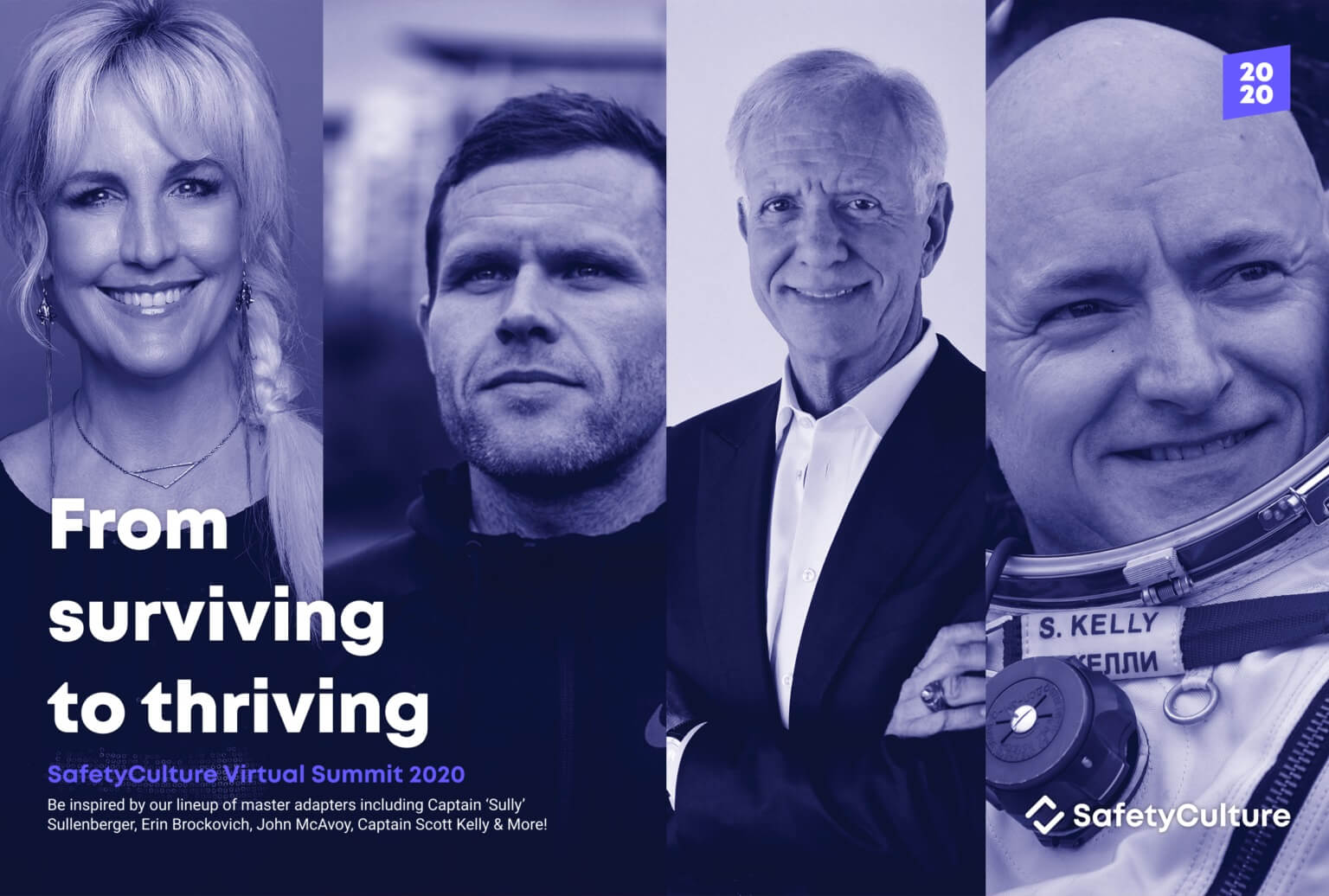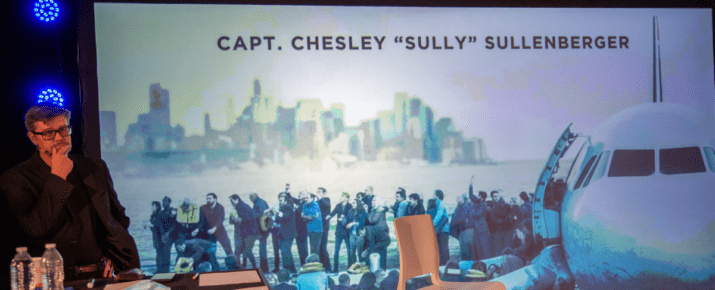Moving from Surviving to Thriving: 5 Tips
From Surviving To Thriving Virtual Summit | By | 6 Nov 2020 | 5 minute read


When I hosted the public radio program “Marketplace” in the early 2000’s, we had a segment in the middle of the broadcast that offered a quick review of what was happening on Wall Street. “Now, let’s do the numbers,” I’d say, and off we’d go into a rapid-fire, somewhat tongue in cheek summary of big moves in the markets, backed with the musical accompaniment of “Happy Days are Here Again”, or “Stormy Weather”. The tone was a little subversive. The message? You can’t ignore the math, but it’s not enough just to “do the numbers”. The stories of business are ultimately human stories about people with ideas having the potential to change the world – and what they do with those big ideas.
In each of the many stories we’ve told for Business Wars and Business Wars Daily – from Nike v. Adidas, to Blockbuster v. Netflix, Amazon v. WalMart, Coke v. Pepsi and more – one can extract lessons about facing challenges, fending off rivals, taking charge, pushing back, transitioning into change, and, often, failing to make such transitions. Over the past few years, I’ve been taking notes on those lessons, and I’m thinking some of those lessons may be useful as business leaders and middle managers face a new landscape profoundly reshaped by global pandemic and uncertainty. How do businesses move from merely surviving to thriving? A few thoughts.
1. Don’t downplay the role of luck and timing
You know those official corporate histories that often sound too good to be true? That’s because they usually are too good to be true. All enterprises are subject to the fickle finger of fate; luck and timing play a far more important role than most are willing to acknowledge. McDonald’s was a modest success before Ray Kroc ever took a bite of a drive-in burger. Kroc’s purchase and transformation of McDonald’s came at a time when the automobile was shifting lifestyles and popular norms in ways he didn’t fully foresee. Seizing on these changes, Kroc transformed a drive-in burger shack popular with teenagers to a roadside symbol of suburban prosperity. The “Golden Arches” would evolve into a global brand representing speed, consistent quality and value. While sometimes maligned as a symbol of American consumerism, too, McDonald’s continues to survive – and thrive – because of its ability to adapt to local conditions and shifting public expectations. The real test of a company is how it manages change and one thing you can be certain of: you will be tested.
2. Seek the new ‘High Ground’.
Chances are you’re not reading this on a BlackBerry. Yet once upon a not-so-distant time, the BlackBerry was considered so dominant (and so addictive), the words “smartphone” and “CrackBerry” were nearly synonymous. When Steve Jobs introduced the iPhone in 2007, the biggest complaint was that it lacked the physical keypad of the BlackBerry. Within the halls of Research-in-Motion, BlackBerry’s parent company, the idea of a smartphone with true safe web browsing capability seemed unrealistic. We all know what happened next, but it was far from inevitable. Though the Mac was selling well and the iPod was still red-hot, Steve Jobs was restless. He understood that rapid change in the technological landscape could have a destabilizing impact on dominant players in the mobile phone space. By promising to seize on tomorrow’s innovations today, the iPhone would make the BlackBerry an overnight dinosaur, putting Research-in-Motion in perpetual catch-up mode. Day in and day out, business may sometimes feel like a game of survival, but you’re in it to win, you must keep gaining ground. And that means never settling for just surviving.
3. Forage on the enemy
In many rapidly changing business climates, such as those buffeted by technological change, economic downturns or threats from rivals, most businesses will direct resources toward survival without changing fundamentals that have “brought us to where we are today”. The instinct toward preservation creates opportunity for forward thinking rivals. Netflix gained an early upper hand against the video industry Goliath, Blockbuster, by taking advantage of its customers’ greatest discontent: fees for late video returns. “No More Late Fees” not only put Netflix on the map during the days of DVDs, it took away a major revenue source from Blockbuster, and helped Netflix build a reputation early-on as more in touch with consumers. The exodus of Blockbuster customers to Netflix created goodwill that would serve it well as Netflix invited customers to try something really radical: streaming movies. Blockbuster never regained its equilibrium.
4. Acknowledge mistakes, and leverage customers’ goodwill to get better.
Pizza Hut might still be #1 in the world, if Domino’s had continued to ignore what everyone was saying about its product in social media: “it stinks”! Although acknowledging that your product tastes like cardboard is no fun, Domino’s leadership concluded that the alternative – ignoring the online critics – could be fatal. In a series of commercials, Domino’s acknowledged that its product quality was subpar. That move certainly was an attention grabber. Then Domino’s promised to improve quality, and challenged the “haters” to try out the improved version, inviting critiques on social media. This would mean no shortcuts: you couldn’t promise improvement but fail to deliver (ahem). Not only did this promise improve the pizza and sales, it inspired a company-wide rethink of the relationship between quality and profit, and a renewal of corporate values. By 2017, Domino’s had taken the top spot in global pizza sales, and what was once considered a “risky” strategy is now a case study in shifting from merely surviving – to thriving.
5. Practice seeing resistance as an opportunity.
You can’t set an industry on fire without a spark, yet some will fear that you’ll burn down everything they’ve built. Resistance to change doesn’t just come from corporate rivals, it can come from within the company itself. Back when computers occupied entire floors of skyscrapers and names like UNIVAC ruled the world of data processing, International Business Machines was a medium-sized player in the marketplace, struggling to win more government and university contracts. Thomas Watson, Jr. saw the future of the computer as having a smaller footprint but becoming a much bigger business. His father, who had helped build IBM from the ground up and was then its president, was having none of it. The elder Watson was losing confidence in the wisdom of his son, the heir apartment to the corner office. Though Watson, Jr. had every reason to back off, he understood what the internal resistance represented, and leveraged that insight into a reimagining of IBM as a company that built solutions for people, not just bigger and bigger computers. It would be the start of a personal computing revolution that continues to this day.
There are many more lessons to be drawn from the fates of companies large and small, but central to almost every story of success are the choices made when that crucial moment comes to transition from surviving to thriving.
Indeed, one senses that we are all at a moment of transition right now. For businesses large and small, the question is, “Are you ready?”
| Don’t just survive: thrive 2020 might have been about survival, but 2021 is a chance to make a significant shift in your business and drive quality and efficiency for your customers. It’s time to stop reacting and start responding with a new mindset. SafetyCulture Summit 2020: From Surviving to Thriving promises to be one of the stand-out events for the year for anyone who wants to optimize their operations successfully. Join us for a deep dive into how to strengthen your business for next year, focusing on better safety practices and learning from those who are masters of adaptation. |

Important Notice
The information contained in this article is general in nature and you should consider whether the information is appropriate to your specific needs. Legal and other matters referred to in this article are based on our interpretation of laws existing at the time and should not be relied on in place of professional advice. We are not responsible for the content of any site owned by a third party that may be linked to this article. SafetyCulture disclaims all liability (except for any liability which by law cannot be excluded) for any error, inaccuracy, or omission from the information contained in this article, any site linked to this article, and any loss or damage suffered by any person directly or indirectly through relying on this information.





